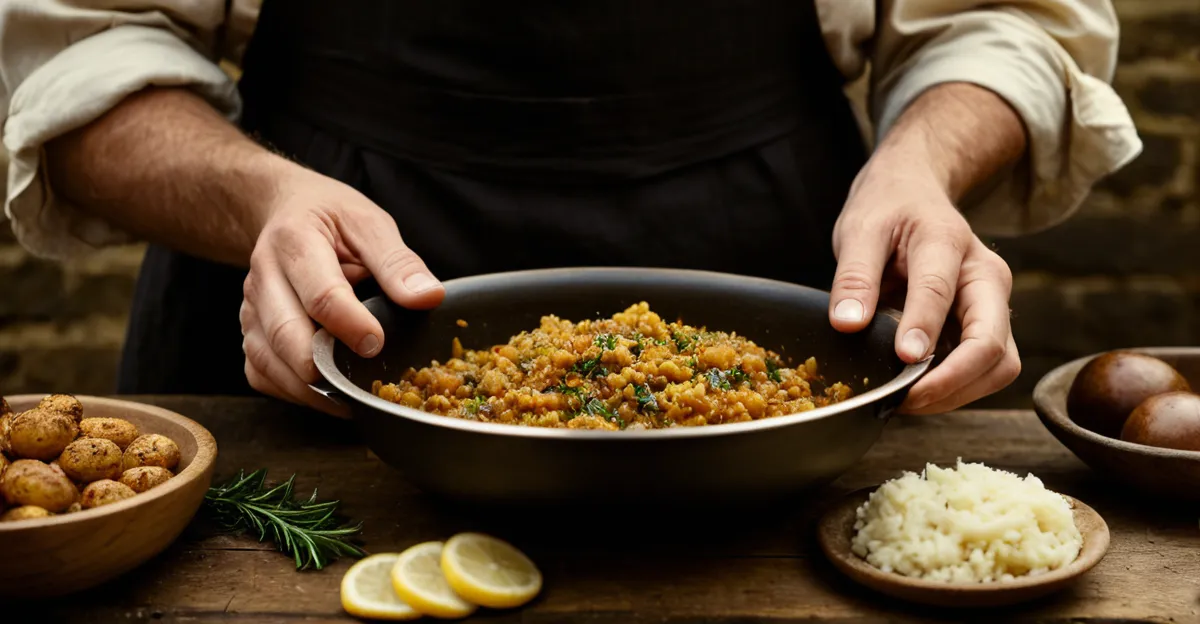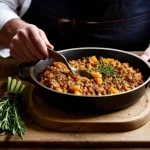Overview of the Historical Evolution of UK Cuisine
The history of British food reflects a dynamic journey shaped by key periods and cultural shifts. From early foraging and farming to modern culinary trends, the evolution traces a path marked by innovation, adaptation, and preservation. One of the earliest turning points occurred during the medieval period, where staples like grains and root vegetables formed the backbone of the diet, giving rise to foundational dishes still enjoyed today.
Significant traditional UK dishes emerged alongside societal changes, notably influenced by aristocratic tastes in Tudor and Stuart times. The introduction of spices through expanding trade routes enriched the flavors and complexity of British cooking, signaling a notable step in the UK’s culinary evolution. This period saw the transformation of simple ingredients into elaborate meals, setting culinary standards that persisted in British kitchens.
In parallel : Why Do Traditional UK Recipes Hold Timeless Culinary Value?
Over centuries, the UK culinary evolution incorporated diverse influences yet maintained distinctive elements. Techniques such as roasting, boiling, and baking became central to meal preparation. The persistence of hearty, slow-cooked foods reflects both historical necessity and cultural preference, ensuring that many dishes have become symbolic of Britain’s identity. The endurance of these traditions highlights the contrast between culinary innovation and the preservation of heritage in British food culture.
Impact of Historical Events and Invasions on UK Food
The historical influences on UK cuisine are profound, with Roman, Viking, and Norman conquests each leaving distinct culinary marks. During Roman Britain, new ingredients like grapes, herbs, and exotic spices were introduced, expanding the limited medieval diet. Romans also brought cooking techniques such as baking and refined bread-making, which became staples in later British cooking.
Also to discover : What are the secrets to a perfectly spiced mulligatawny soup?
The Norman conquest food influence deepened complexity in dishes. Normans emphasized sauces and elaborate feasts, introducing game meats and refined butchering techniques. This shift elevated dining from mere sustenance to an expression of status, influencing the development of traditional UK dishes such as pies and stews.
Trade and colonial expansion played crucial roles in enriching British food culture. The importation of ingredients like sugar, tea, and spices from colonies profoundly shaped British tastes. These historical influences on UK cuisine led to fusion dishes blending native and foreign elements. For example, the incorporation of curry spices into British cooking reflects a direct consequence of colonial culinary exchange.
Integration of foreign ingredients and techniques transformed everyday British meals. The Viking invasions brought salted and smoked fish methods, which remain popular in dishes like kippers. Likewise, Norman introductions of game and rich sauces helped form the basis of elevated medieval British cuisine found in many traditional UK dishes today. This blend of influences underscores the adaptability and evolution inherent in the UK culinary evolution.
The Role of Agriculture and Local Resources
Agriculture has played a pivotal role in shaping the history of British food. The UK’s geography and temperate climate led to the abundant availability of crops like barley, wheat, and root vegetables, which became staples in the diet. These local ingredients UK formed the foundation for many traditional UK dishes that rely heavily on hearty, simple produce suitable for the often cool and wet environment.
The UK agricultural history reflects a gradual evolution in farming practices—from small-scale subsistence farming in early periods to larger, more efficient estates during the medieval and post-medieval eras. Crop rotation and improved animal husbandry enhanced both the quantity and quality of produce and livestock. Sheep and cattle farming increased, providing meat and dairy that feature prominently in the UK culinary evolution.
Regional differences in British food origins are often tied directly to variations in local produce. Coastal areas naturally specialized in seafood, which became central to dishes like fish and chips, while inland regions emphasized grain and livestock. For instance, the fertile lands of East Anglia contributed to grain production, while upland areas of Northern England shaped the preference for robust meat dishes. This close relationship between British food origins and local ingredients UK underscores the way environment has historically dictated culinary practices and created diverse regional specialties across the UK.
Origin Stories of Iconic UK Dishes
The origin stories UK food offers fascinating insights into how traditional British dishes evolved from simple beginnings to national treasures. Take fish and chips: this once humble street food emerged in the 19th century, combining fried fish influenced by Jewish immigrants with French-style fried potatoes. Over time, it became a lasting symbol of British working-class cuisine, appreciated nationwide for its convenience and hearty flavor.
Another cornerstone is roast beef, central to the classic Sunday lunch tradition. Its widespread popularity grew in the 18th and 19th centuries when beef farming expanded, especially in England. Roast beef symbolized prosperity and togetherness, often served alongside seasonal vegetables. This dish underlines the UK’s connection to livestock farming and communal meals.
The Cornish pasty tells a distinctly regional origin story, crafted originally as a practical, portable meal for miners in Cornwall. Its robust crust protected the filling—meat, potatoes, and swede—making it easy to eat by hand during laborious work. The pasty’s enduring presence highlights how famous British foods history ties deeply to regional work cultures.
Yorkshire pudding rounds out iconic UK fare, born from northern England’s resourceful use of batter alongside roast dinners. Originally a cheap filler to accompany meat juices, it evolved into a beloved side dish integral to British Sunday roasts. This dish exemplifies how resourcefulness in cooking shaped enduring culinary traditions within the UK.
These traditional British dishes are more than recipes; they embody layers of social, economic, and cultural history, illustrating the breadth of the UK culinary landscape. Their evolution reflects changing needs and tastes while maintaining roots in practicality and local resources.
Culinary Traditions Through the Eras
Exploring British food eras reveals significant transformations reflecting social, economic, and cultural changes. The medieval British diet mainly consisted of coarse grains, root vegetables, and limited meat for common folk, while the aristocracy enjoyed richer fare with spices and elaborate preparations. Meal structures were simple but meaningful, often centered around communal sharing.
The Tudor era introduced more variety and refinement. Influenced by expanding trade networks, Tudor tables saw imported spices and sugar becoming luxury staples. Dining habits also shifted to include formal multi-course meals, marking an early sign of the evolving UK culinary evolution.
Moving into the Georgian and Victorian periods, British cuisine experienced innovations such as improved preservation techniques and the rise of cookbooks, which helped disseminate recipes and cooking knowledge more broadly. The Victorian era especially emphasized elaborate dinner parties and formal etiquette, reflecting social aspirations through food. Dishes became more diverse, integrating new ingredients from the expanding British Empire.
However, wartime and postwar Britain brought practical changes to everyday meals. Rationing during World War II drastically limited ingredient availability, prompting creativity with modest resources. Postwar, there was a renewed interest in traditional foods but also openness to international influences, setting the stage for modern British cuisine.
Throughout these eras, traditional UK dishes emerged and adapted, showcasing resilience and flexibility. The medieval passion for hearty stews lingered, while Georgian and Victorian tastes introduced complexity and sophistication. Modern British cooking continues to balance heritage with innovation, echoing centuries of evolving culinary traditions.


